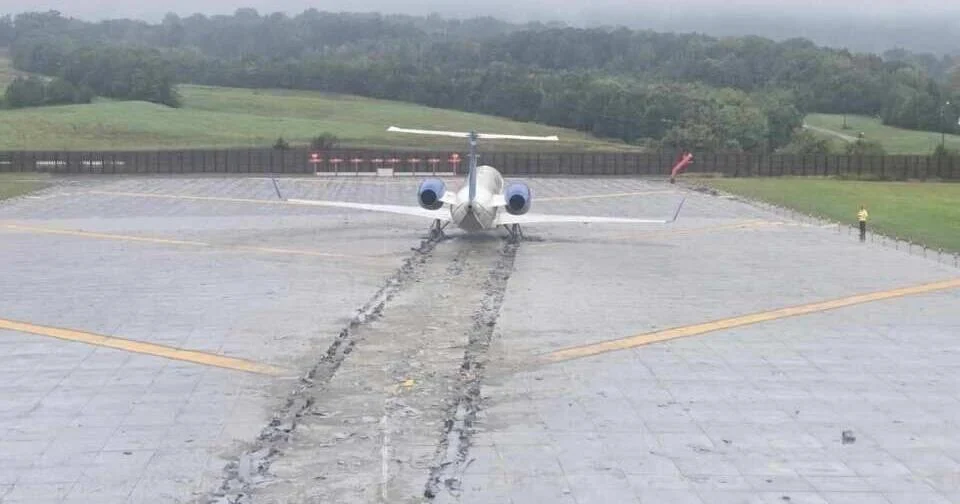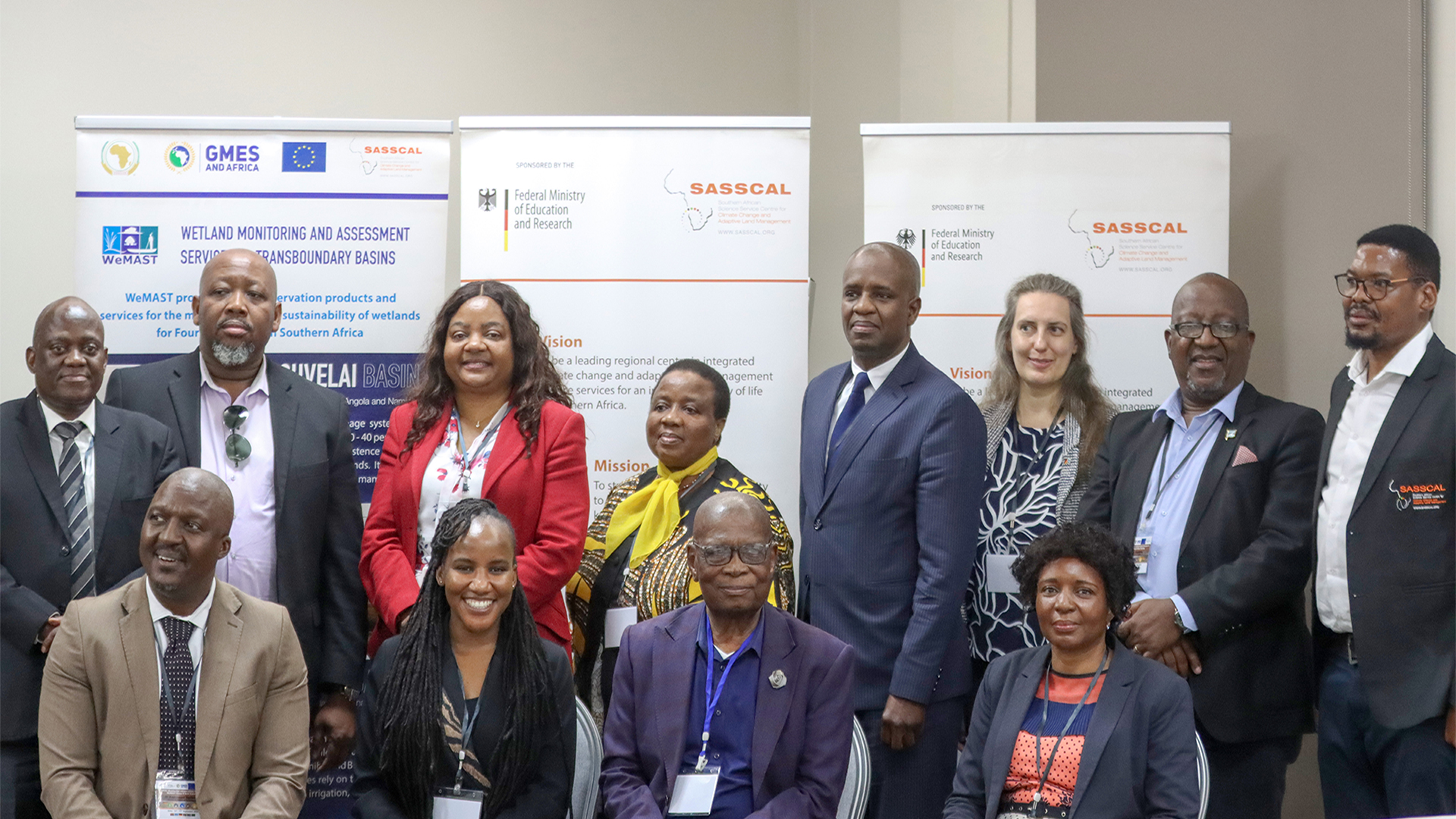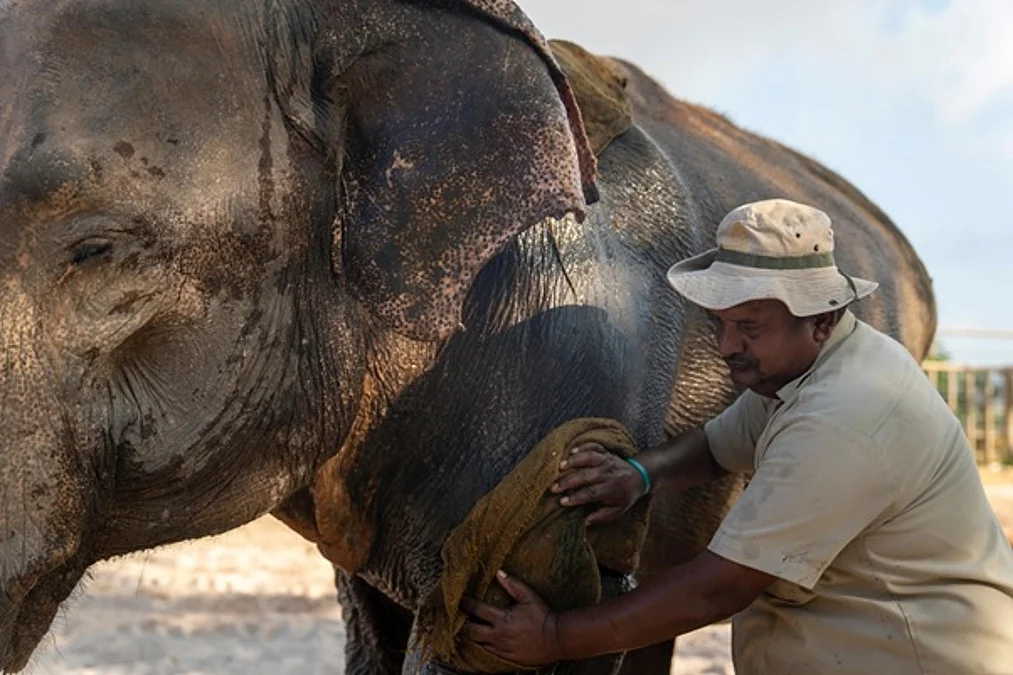
A commuter jet ran off the end of a runway at the Roanoke-Blacksburg Airport on Wednesday night as it landed during a heavy rainfall.
None of the 53 passengers and crew members were injured. But for Deborah Tatar, who was on board the United Airlines Flight 4339 from Washington Dulles International Airport, it was quite a jolt.
“We came down very fast, and we hit the runway pretty hard and bounced,” Tatar said Thursday in a telephone interview from Blacksburg, where she and her husband were headed at the time of the 9:18 p.m. incident.
“And then they put the brakes on really hard,” she said. “That was alarming, because I had never heard airplane brakes make a sound like that.”
The Embraer EMB-145XR aircraft overshot its landing and ran out of space on the runway, according to Virginia State Police. After running off the pavement, the jet was stopped by an adjacent “engineered materials arresting system” — essentially a sand trap of crushable concrete.
“Think of it as akin to a runaway truck ramp,” Alexa Briehl, a spokeswoman for the Roanoke Regional Airport Commission, said of the safety measure that was just updated last year.
The Federal Aviation Administration will conduct an investigation before determining the cause of the incident, which happened as a severe storm passed over the airport.
In a recorded conversation between pilots and the Roanoke air traffic control tower, a Piedmont flight that had just landed reported “marginal visibility,” according to Robert Katz, a pilot and flight instructor from Texas who compiled the recording from the website Live ATC.
“Did you copy that?” the air traffic controller asked United Flight 4339. The pilot responded yes, shortly before the plane made its botched landing.
In those conditions, “it is up to the flight crew to decide if the visibility is good enough to land or not,” said Ella Atkins, a professor and head of the Aerospace and Ocean Engineering Department at Virginia Tech.
Atkins, who listened to the recording, said she was not comfortable saying whether or not the United pilots made the right call. She said more information is needed, including that captured by the jet’s black box, before a conclusion can be drawn
“It’s a hard decision,” she said. “The flight crew doesn’t want to be overly conservative,” which could lead to major delays for passengers if they decided to fly to another airport to avoid a storm that could quickly pass.
“One of the most high-stress parts of being a pilot is making hard decisions about whether to land in marginal conditions,” Atkins said.
But one thing is clear, she said: The engineered materials arresting system played a vital role in preventing what could have been a disaster — had it not stopped the plane from continuing on to nearby Peters Creek Road.
“This was a textbook case of why the EMAS system should be put in every airport,” she said.
Tatar, who was on the airplane with her husband, Steve Harrison, said she was grateful for the system. The couple, both retired computer science professors from Tech who now live in California, have flown in and out of the Roanoke Airport many times.
“It was actually not that scary in the moment,” Tatar said. “It was a hard landing, but I didn’t have time to be scared until we stopped.” In retrospect, she said, the close proximity of a heavily traveled road to the runway made her think twice.
“It could have been a major tragedy,” she said.
Briehl said it was the first time the EMAS system had been used. “The ROA EMAS was installed in 2024, replacing an older version that was in place for over 20 years with no reported incidents,” she wrote in an email.
EMAS systems have been installed at 69 airports in the United States and have safely stopped 24 planes carrying 438 crew and passengers, according to the Federal Aviation Administration.
The incident happened on the northern end of Runway 16-34, which is 5,810 feet long. Repairs must be made to the runway, which will remain closed for the foreseeable future, Briehl said.
Although the airport was shut down immediately after the United Airlines mishap, a second runway, which is 6,800 feet long, was reopened shortly after midnight and will remain available for all flights.
Throughout Wednesday night’s ordeal, most of the passengers on board did not panic, Tatar said.
Communications between United Flight 4339 and Roanoke air controllers
“Nobody screamed,” she said. “Everybody was very calm.”
There was little turbulence as the jet approached Roanoke, and the exit from the runway onto to the adjacent EMAS system was “remarkably smooth,” she said.
Once the jet came to stop, “there was complete silence on the plane. I think we were all waiting for the pilot to say something. But there was never a message from the cockpit, ever,” she said.
Passengers were directed to use ladders to exit the plane — a process that Tatar said took nearly an hour in pouring rain — and transported by buses to the airport terminal.
Tatar and Harrison are staying with friends in Blacksburg, where they traveled to attend the 30th anniversary celebration of Tech’s Center for Human-Computer Interaction.
They received an email Thursday from United that read, in part: “We’re very sorry about your experience upon arrival into Roanoke on UA4339. At United, we pride ourselves on creating positive, seamless travel experiences, and this time we missed the mark.”
Early Thursday afternoon, the couple was still waiting for their luggage from a flight that arrived in Roanoke more than two hours late.
“It was a long night,” Tatar said.
Laurence Hammack (540) 981-3239
laurence.hammack@roanoke.com
Be the first to know
Get local news delivered to your inbox!
* I understand and agree that registration on or use of this site constitutes agreement to its user agreement and privacy policy.



